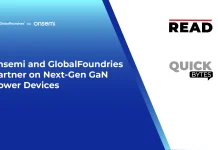Today, businesses are struggling with managing diverse operational procedures amidst a dynamic business landscape. In response to this, the implementation of industrial control & factory automation proves to be a notable solution. It plays a significant role in enhancing efficiency, accuracy, and productivity within the business workforce.
So, let’s dive in and discover more about this remarkable approach that is reshaping industrial processes.
What is Industrial Control & Factory Automation?
Industrial control and factory automation refer to the use of control systems, computers, robots, and information technologies to handle various processes and machinery. It is a step beyond mechanization and involves the automation of tasks that were previously performed manually by humans. This approach aims to increase productivity, reduce costs, improve quality, and enhance flexibility in the manufacturing process.
Today, most companies are implementing factory automation and industrial control for efficient working and improving workforce performance. According to Extrapolate’s report, the global industrial control & factory automation market value is expected to reach $383.67 billion by 2030.
Types of Industrial Control & Factory Automation Systems
Below are the main systems used for industrial control and automation in various sectors.
● Supervisory Control and Data Acquisition (SCADA)
SCADA systems are mainly utilized to monitor and control industrial operations and equipment. They collect data from sensors and devices, provide real-time visualization, and allow operators to control the processes remotely.
● Distributed Control Systems (DCS)
DCS systems are used in large-scale industrial processes, such as power plants and chemical plants. They consist of multiple control units distributed throughout the plant, which communicate with each other to control the processes.
● Industrial Automation and Control Systems (IACS)
IACS refers to the use of automation technologies, such as PLCs (programmable logic controllers) and PACs (programmable automation controllers), to control and automate industrial processes. These systems are widely used for manufacturing, transportation, and power generation.
● Programmable Logic Controllers (PLCs)
PLCs are computer-based control systems that are widely popular and commonly used in industrial automation. This type of programmable industrial control & factory automation system can be used to control and monitor various processes and machinery in real-time.
● Programmable Automation Controllers (PACs)
PACs are similar to PLCs but offer more advanced capabilities. They combine the features of PLCs with additional computing power and communication capabilities, making them suitable for complex automation tasks.
● Human-Machine Interface (HMI)
HMIs provide a graphical interface for operators to interact with automation systems. They display real-time data, allow operators to monitor and control processes, and give alarms and notifications.
● Remote Terminal Units (RTUs)
RTUs are used to monitor and control remote equipment and processes. They collect data from sensors and devices in remote locations and transmit it to a central control system for analysis and control.
● Intelligent Electronic Devices (IEDs)
IEDs are specialized devices used in power systems for monitoring, protection, and control. They are used in applications such as substation automation and smart grid systems.
The Role of Industrial Control & Factory Automation in Manufacturing
Industrial control and factory automation play a pivotal role in modern manufacturing. They enhance productivity and efficiency by automating processes, reducing human error, and optimizing production rates. These systems also contribute to improved quality control, ensuring consistent product quality and customer satisfaction.
The automation system is mainly implemented to minimize the need for manual labor, resulting in reduced labor costs and increased profitability. With their ability to provide real-time monitoring, these systems help maintain product quality and conformity. Industrial control and factory automation stand as a backbone for the manufacturing industry, offering stability.
Innovations in the Industrial Control & Factory Automation Industry
Below are three recent developments in the fields of industrial control and factory automation.
1. Advanced Robotics
Robotics technology has advanced significantly in recent years, enabling more sophisticated and versatile automation solutions. Collaborative robots (cobots) are being used alongside human workers, enhancing productivity and safety. Advanced robotic systems are capable of complex tasks such as assembly, material handling, and inspection.
For example, ABB has introduced the YuMi, a dual-arm robot designed for automation in small parts assembly. The robot eliminates barriers to collaboration by eliminating fencing and cages. It is easy to set up and use, making it suitable for even people without specialized training.
2. Cybersecurity
Cybersecurity has become a critical concern with the increasing connectivity and digitization of industrial control systems. Advancements in cybersecurity technologies and practices are being implemented to protect industrial control and factory automation systems from cyber threats and ensure the integrity and confidentiality of data.
In this field, Schneider Electric is renowned for manufacturing innovative automation and control systems. EcoStruxure IT, a DCIM solution, safeguards critical data and business information. It offers secure monitoring, management, insights, planning, and modeling to protect against cyberattacks. It helps data center structures promptly adjust and support future automation demand and growth.
3. Cloud Computing and Edge Computing
Cloud computing and edge computing technologies are being utilized in industrial control and factory automation. Cloud platforms enable centralized data storage, analysis, and remote access to control systems. Edge computing brings computing power closer to devices and sensors, allowing for faster data processing and real-time decision-making.
One of the best examples is Siemens, which offers a wide range of automation and digitalization solutions. It integrates new technologies such as AI, ML, and IIoT for developing cloud-based systems and smart manufacturing solutions. Its innovative SIMATIC PCS 7 V 9.0 system offers increased agility in manufacturing process control and automation, setting a background for digital transformation.
To Wrap Up
Industrial control & factory automation have revolutionized the manufacturing industry by offering advanced efficiency, productivity, and safety. The integration of technologies and a wide range of automation and control systems led to optimized production processes and reduced costs. Advancements in technology such as robotics, cybersecurity measures, cloud computing, and edge computing have further enhanced connectivity and versatility in automation systems. This innovative approach not only improves production quality but also helps manufacturers remain competitive in a rapidly evolving landscape. In the future, industrial control & factory automation is expected to create a future of increased efficiency and sustainability.
Browse More Posts:-
Aerospace Materials Market
Offshore Wind Energy Market
Bath bomb market
Smart Grid Market




